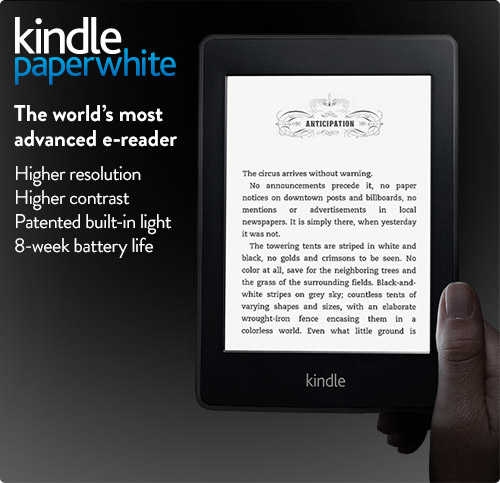

This time around, everything is touch-based, and though E Ink continues to have a much slower response rate than LCD screens (the benefit is that it looks like real ink), the Paperwhite is a big step forward.

Touch & FeelĪmazon continues to refine its touch interface. The effect isn’t distracting though, and compared to the Nook, the screen has a much more even light distribution to it. The only complaint we have is that in darker conditions, you can see a few spots where light is more intense at the bottom of the screen due to the placement of the LED lights.

You can easily adjust the intensity of the light as well. However, unlike the Nook, which has an uneven blue tint to it, Amazon’s light makes the e-reader look more like actual paper than ever before. This is the first Kindle with a built-in screen light, in fact it’s one of the first e-readers with this feature, following the introduction of the Nook Simple Touch with GlowLight earlier this year. It still has a slow refresh rate and only comes in black and white, but for reading, there is nothing better.Īt first, you may not realize it, but the reason the Paperwhite screen looks so white is its front light. This is the best E Ink screen we’ve ever seen. If you’ve looked at other e-readers, you’ll be impressed when you first see the screen if you aren’t an e-reader user, you might be shocked. Amazon boasts that this Kindle has 25 percent higher contrast and 62 percent more pixels than previous Kindles.

The first thing you will notice about the Kindle Paperwhite is how… well, white and clear the screen is. With the Kindle Paperwhite, Amazon hasn’t redefined the idea of an e-reader – it’s still just for books – but it has taken the concept to a new level. Many thought dedicated e-book readers would die out with the introduction of the iPad a couple of years ago, but sales remain strong. Fitbit Versa 3Īmazon’s Kindle kicked off the e-reader and tablet phenomenon and continues to reign supreme today.


 0 kommentar(er)
0 kommentar(er)
